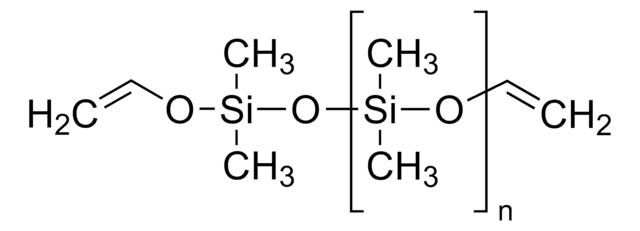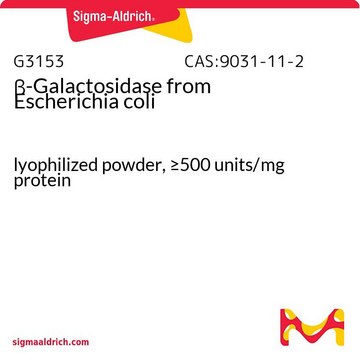SCC291
SHSY-5Y Tet-On Inducible Alpha-Synuclein Neuroblastoma Cell Line
Human
Iniciar sesiónpara Ver la Fijación de precios por contrato y de la organización
About This Item
UNSPSC Code:
41106514
NACRES:
NA.81
Productos recomendados
Nombre del producto
SHSY-5Y Tet-On Inducible Alpha-Synuclein Neuroblastoma Cell Line,
biological source
human
packaging
pkg of >1X10⁶ vials
manufacturer/tradename
Sigma-Aldrich
growth mode
N/A
technique(s)
cell culture | mammalian: suitable
shipped in
dry ice
storage temp.
≤ − 140°C
General description
The SHSY-5Y Tet-ON inducible α-synuclein neuroblastoma cell line serves as a model for both dopaminergic neuronal biology and α-synuclein pathology. SHSY-5Y cells may be induced upon treatment with retinoic acid to differentiate into neuronal-type cells, enabling studies of neuronal function and differentiation.4 SHSY-5Y cells secrete catecholamines and thus serve as a model for dopaminergic neurons. The SHSY-5Y TetON α-synuclein inducible cell line harbors an α-synuclein construct inducible by treatment with doxycycline, thus allowing controlled overexpression of α-synuclein before or after neuronal differentiation.5 The construct also includes a tet repressor, which prevents leaky expression in absence of inducer. This unique cell line is an excellent model for both the basic cellular physiology of Parkinson′s disease and therapeutic development.
Application
Parkinson′s disease, the most common neurodegenerative movement disorder1, is caused by the progressive degeneration of dopaminergic neurons. A signature pathology of the brains of Parkinson′s patients is the buildup of misfolded aggregates of the protein α-synuclein.2 Aggregates of α-synuclein are also implicated in Lewy body dementia and Alzheimer′s disease.3 Although study of the complete pathogenesis of neurodegenerative diseases such as Parkinson′s requires animal models, cellular models that reflect distinct aspects of Parkinson′s pathology are of great value for understanding the multifaceted character of neurodegenerative diseases and useful for developing targeted treatments.The SHSY-5Y Tet-ON inducible α-synuclein neuroblastoma cell line serves as a model for both dopaminergic neuronal biology and α-synuclein pathology. SHSY-5Y cells may be induced upon treatment with retinoic acid to differentiate into neuronal-type cells, enabling studies of neuronal function and differentiation.4 SHSY-5Y cells secrete catecholamines and thus serve as a model for dopaminergic neurons. The SHSY-5Y TetON α-synuclein inducible cell line harbors an α-synuclein construct inducible by treatment with doxycycline, thus allowing controlled overexpression of α-synuclein before or after neuronal differentiation.5 The construct also includes a tet repressor, which prevents leaky expression in absence of inducer. This unique cell line is an excellent model for both the basic cellular physiology of Parkinson′s disease and therapeutic development.Source The SHSY-5Y Tet-ON Inducible -Synuclein cell line is stably transfected with a construct containing an alpha-synuclein cDNA cassette and CMV promoter under control of Tet-ON response element.5 The parental SHSY-5Y cell line was derived from a metastatic neuroblastoma of a 4-year-old female.6References1. Falkenburger BH, Saridaki T, Dinter E. J Neurochem 2016;139 (Suppl 1):121-130.2. Balestrino R, Schapira AHV. Eur J Neurol 2020; 27(1):27-42.3. Twohig D, Nielsen HM. Mol Neurodegener 2019; 14(1):23. 4. Agholme L et al. J Alzheimer′s Dis 2010; 20(4):1069-1082.5. Vasquez V, Mitra J, Perry G, Rao KS, Hegde ML. J Alzheimer′s Dis 2018; 66(2):453-460.6. Biedler JL, Helson L, Spengler BA. Cancer Res 1973; 33(11):2643-2652.
• Each vial contains ≥ 1X10⁶ viable cells.• SHSY-5Y Tet-ON Inducible -Synuclein Neuroblastoma cells are verified to be of human origin and negative for mouse, rat, Chinese hamster, Golden Syrian hamster, and non-human primate interspecies contamination, as assessed by a Contamination Clear panel by Charles River Animal Diagnostic Services • Cells tested negative for infectious diseases against a Human Essential CLEAR panel by Charles River Animal Diagnostic Services.• Cells tested negative for mycoplasma.
Features and Benefits
SHSY-5Y Tet-ON inducible α-synuclein neuroblastoma cell line serves as a model for both dopaminergic neuronal biology and α-synuclein pathology.
Storage and Stability
The cells should be stored in liquid nitrogen until use. The cells can be cultured for at least 10 passages after initial thawing without significantly affecting the cell marker expression and functionality.
Other Notes
This product is intended for sale and sold solely to academic institutions for internal academic research use per the terms of the “Academic Use Agreement” as detailed in the product documentation. For information regarding any other use, please contact licensing@emdmillipore.com.
Disclaimer
RESEARCH USE ONLY. This product is regulated in France when intended to be used for scientific purposes, including for import and export activities (Article L 1211-1 paragraph 2 of the Public Health Code). The purchaser (i.e. enduser) is required to obtain an import authorization from the France Ministry of Research referred in the Article L1245-5-1 II. of Public Health Code. By ordering this product, you are confirming that you have obtained the proper import authorization.
Unless otherwise stated in our catalog or other company documentation accompanying the product(s), our products are intended for research use only and are not to be used for any other purpose, which includes but is not limited to, unauthorized commercial uses, in vitro diagnostic uses, ex vivo or in vivo therapeutic uses or any type of consumption or application to humans or animals.
Storage Class
12 - Non Combustible Liquids
wgk_germany
WGK 3
flash_point_f
Not applicable
flash_point_c
Not applicable
Certificados de análisis (COA)
Busque Certificados de análisis (COA) introduciendo el número de lote del producto. Los números de lote se encuentran en la etiqueta del producto después de las palabras «Lot» o «Batch»
¿Ya tiene este producto?
Encuentre la documentación para los productos que ha comprado recientemente en la Biblioteca de documentos.
Nuestro equipo de científicos tiene experiencia en todas las áreas de investigación: Ciencias de la vida, Ciencia de los materiales, Síntesis química, Cromatografía, Analítica y muchas otras.
Póngase en contacto con el Servicio técnico






